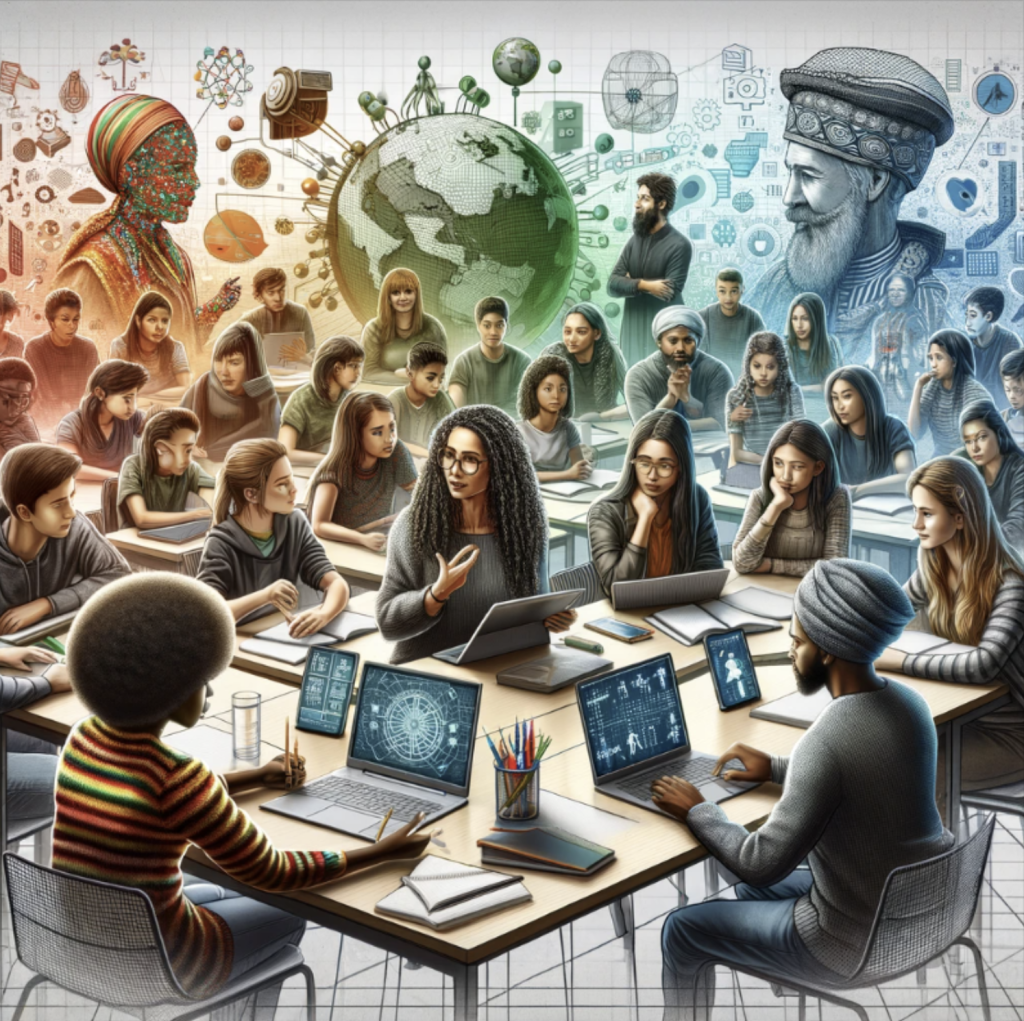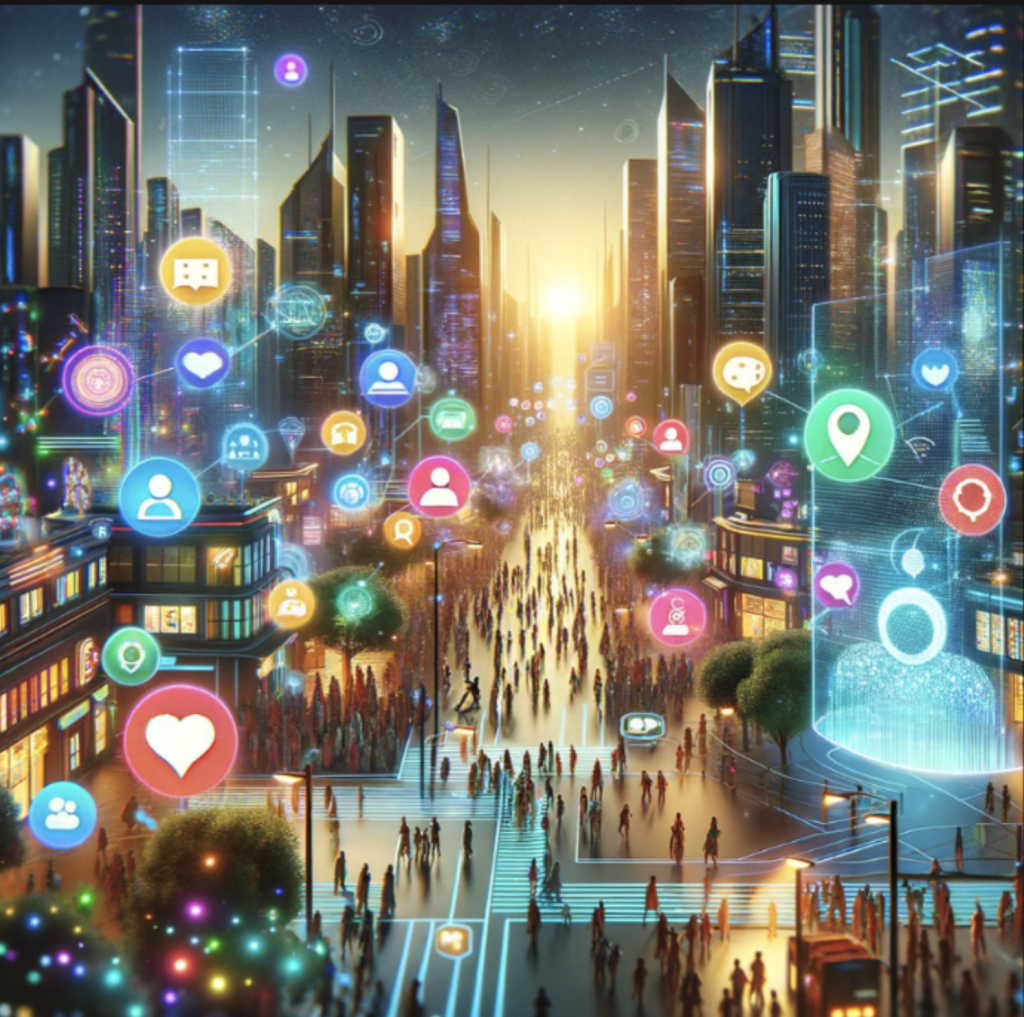Higher education stands at a crossroads where artificial intelligence (AI) is redefining the outlines of learning and knowledge building. On November 6, 2023, during the Open AI DevDay in San Francisco, major breakthroughs in the field of generative AI were announced, highlighting a rapid and inevitable evolution. This digital revolution raises important questions:
- How has higher education adapted so far?
- How can educators and institutions prepare for the future while preserving their core educational values?
- How can we adapt without rushing to allow for better reflection?
This watch blog explores these questions by examining recent Open AI innovations and their implications in the race for adaptability that education has been taking part in.
The Open AI DevDay took place in San Francisco, where Open AI has been located since it was created in 2015. Sam Altman, the new CEO of Open AI following the recenttwists that shook the world of technologies, presented the company’s latest developments that day.
Here’s a timeline of the highlights.
November 2022
ChatGPT is launched in November 2022 as a research project and testing tool.
March 2023
Several significant events for Open AI take place in March 2023:
- Launch of GPT-4, presented as the most powerful generative AI model available to the general public.
- Introduction of new features for ChatGPT, enabling AI to hear, see, and speak.
- Launch of DALL-E 3, an advanced image model integrated into ChatGPT.
In higher education, the educational community got into action quickly in order to grasp generative tools, reinvent itself, and wonder how best to support students in the world of tomorrow. More responsive than before, the entire education sector, including all disciplines, is attempting to take the bull by its horns despite difficulties and unanswered questions.
Resources to research, explore, and understand the subject are not scarce. Professional training offerings abound, both from peers and from expert organizations. The field of research for the development of practices in higher education is thriving. The AI marathon has begun with a pack of enthusiastic, curious, motivated, and skeptical runners, all willingly engaged despite their doubts.
November 2023
Here we are, right in the middle of the marathon, as the runners gradually transition from the euphoric phase to the focused phase. On November 6, 2023, almost on the anniversary of the release of GPT-3.5, Open AI announced new technological advances forcing everyone to pick up the pace.
Here are a few examples:
- Announcement of GPT-4 and the end of GPT 3.5
- GPT-4 Turbo
The turbo version of GPT-4 offers an extended contextual understanding, capable of processing 128,000 tokens, equivalent to about 300 pages of standard text. This represents a significant increase from the previous limit of 8,000 tokens.The model also incorporates improvements in function calling, enabling reproducible outputs. Moreover, GPT-4 Turbo gains access to more recent global knowledge through a database of information that will be updated in April 2024. This continuous knowledge update enables the model to avoid obsolescence. - GPT- 3.5 Turbo
The new GPT-3.5 version, GPT-3.5 Turbo, generates better query responses.
- GPT-4 Turbo
- Usage and adoption of Open AI’s API
- Assistants API
According to Open AI, around 2 million developers use its API (Application Programming Interface), and more than 10 million users are active weekly on ChatGPT. An API serves as an intermediary that allows different computer programs to communicate and share data, similar to a restaurant server transmitting orders between customers and the kitchen.The new API offered to developers makes it easier for them to build their own adaptive technologies applications capable of defining objectives and identifying models and tools.The beta version of Assistants API, which allows code-free writing, is available by visiting the playground provided by Open AI
- GPT-4 Vision
GPT-4 Vision allows the development of applications that feature image analysis. For instance, Be My Eyes is an app that uses this technology to help blind or visually impaired people in their daily tasks, such as product identification or navigation in a store.
- Assistants API
- Integration of DALL-E 3

Image generated by DALL-E 3. Query: “You are an experienced technopedagogical counsellor who loves teaching and pedagogy. For you, human-centered pedagogy takes precedence over digital pedagogy. Create an image symbolizing this idea”
Current text-to-image tools often struggle to fully grasp the meaning of words or details provided, which penalizes users who may not master the art of formulating effective queries.
DALL-E 3, the latest version of the text-to-image generator, allows for the creation of abstract concepts. In this version, Open AI strengthened the security and ethical aspects of the tool, ensuring that image generation remains appropriate and respectful of social norms.
- When Open AI wants to become the Apple Store of AI
A GPTs platform
A GPT is a tailored version of the base ChatGPT model. GPTs represent a significant progression from versatile AI chatbots to specialized assistants AI targeting specific objectives. These GPTs are customizable for specific tasks, making them powerful in various sectors, including education, entertainment, business, and creative arts.
Open AI wants to position itself at the forefront of generative AI tools development. To do so, the company has announced that the platform will now serve as a hub where developers and testers can shape the future of digital technologies. The GPT Store, expected to open in the upcoming months, invites users to join a community on the development, use, and application of GPTs.
In the context of a marathon, there comes a moment when runners feel a pace decline. This challenging phase of endurance makes the race more difficult. The body lacks sugar and energy. It is somewhat in this phase that I picture the education community. As we begin to slow down, to understand better and sometimes reassess, the innovations in generative AI set the pace.
What about copyright?
Today, many issues remain unresolved. One notable example is the question of copyright that Open AI denies by creating the “Copyright Shield,” which is intended for developers and businesses only for now. Indeed, generative AI presents significant legal challenges in terms of copyright [in French]. Recently, artists have filed complaints against text-to-image tools like Midjourney DeviantART for copyright infringement. The company will now defend users and bear legal fees in case of disputes related to copyright violations.
The resilience marathon
The lack of guidance, the mad rush toward an ever-improving technology, and the answers we have not yet found are all challenges slowing us down. The recent advances in AI, particularly those presented by Open AI, are not insignificant technological add-ons. They mark a decisive turning point in how we perceive education and prepare future generations.
The challenges are undeniable, ranging from copyright issues to effective pedagogical integration of these tools to avoid fueling the scourge of cognitive laziness, both on the part of our students and ourselves.
However, by addressing these challenges with a willingness to adapt and collaborate, the higher education sector can not only keep pace with this frantic technological race but also play a leading role in defining its own path.
In the end, our common goal must focus on aligning these advancements with our educational principles. This will ensure that technology serves humanity and enriches learning for all. Let’s not be led by technology. Let’s lead the pack by developing resilience methodologies.



